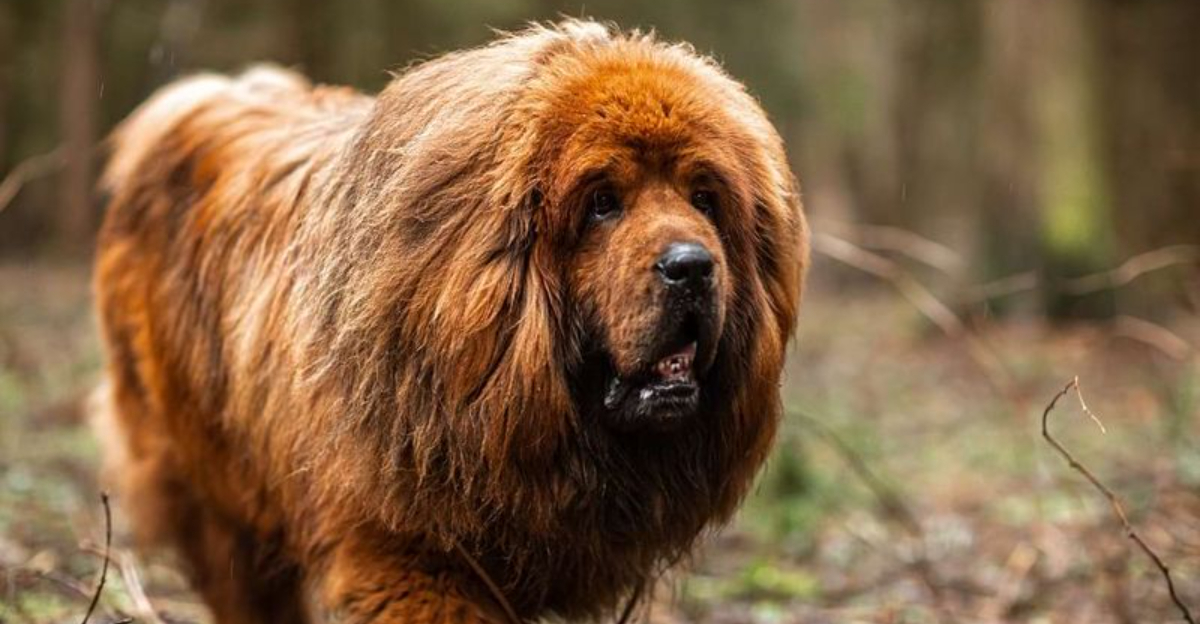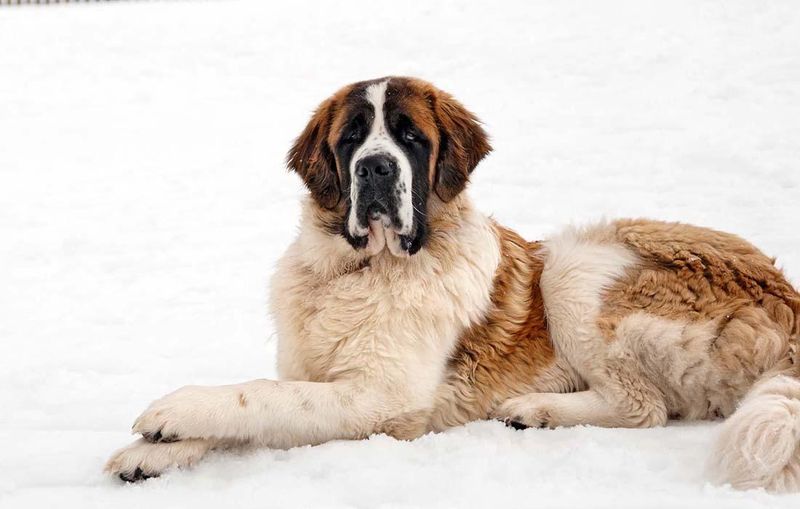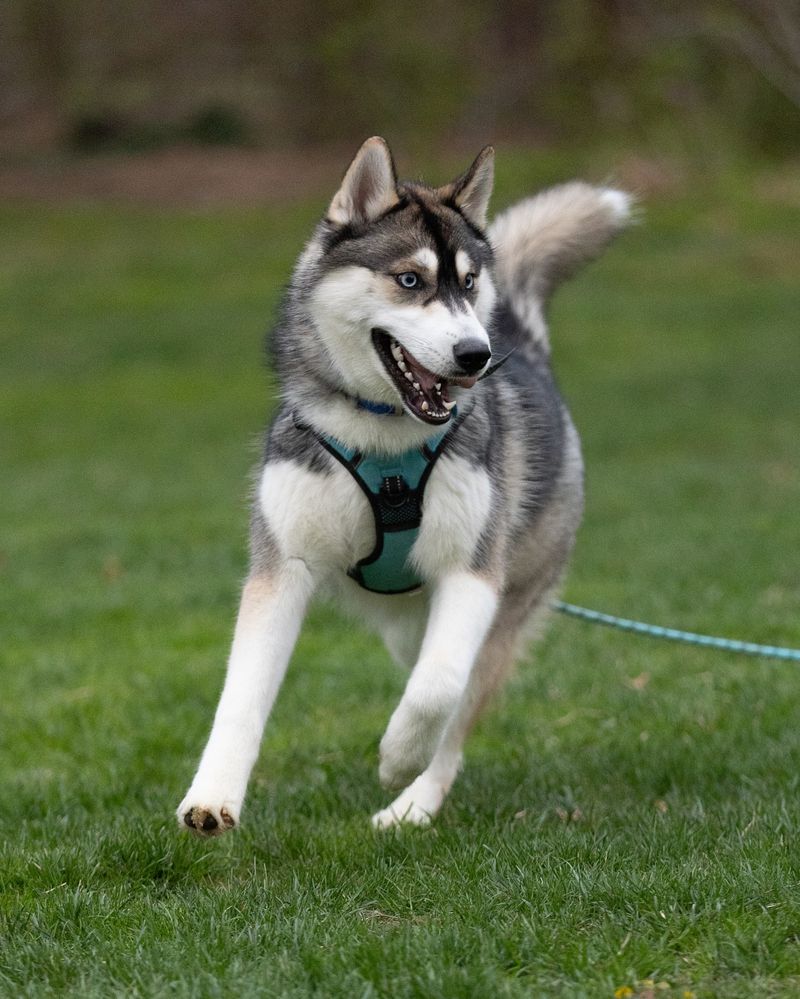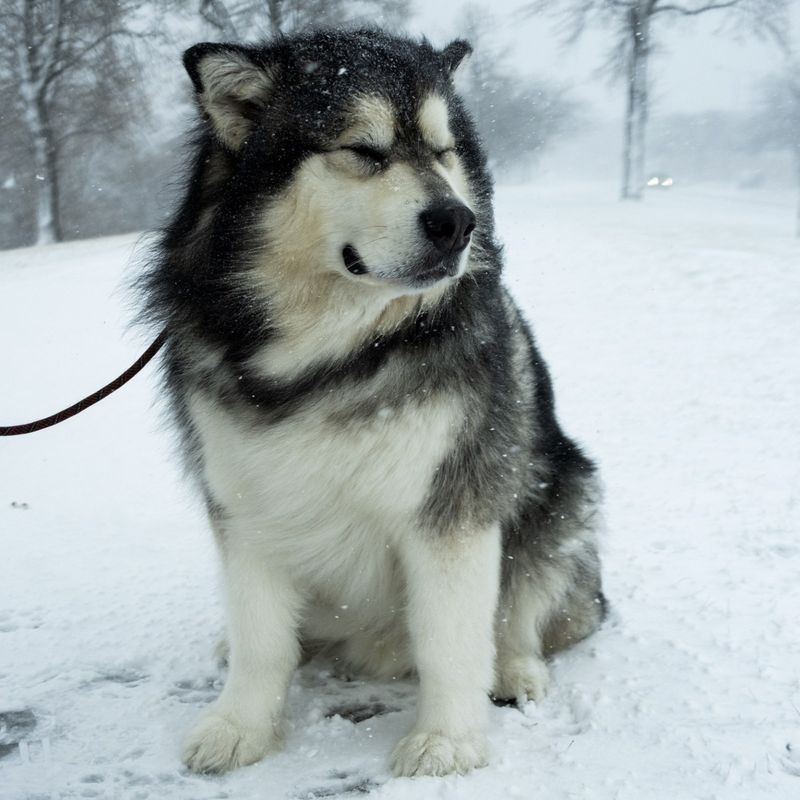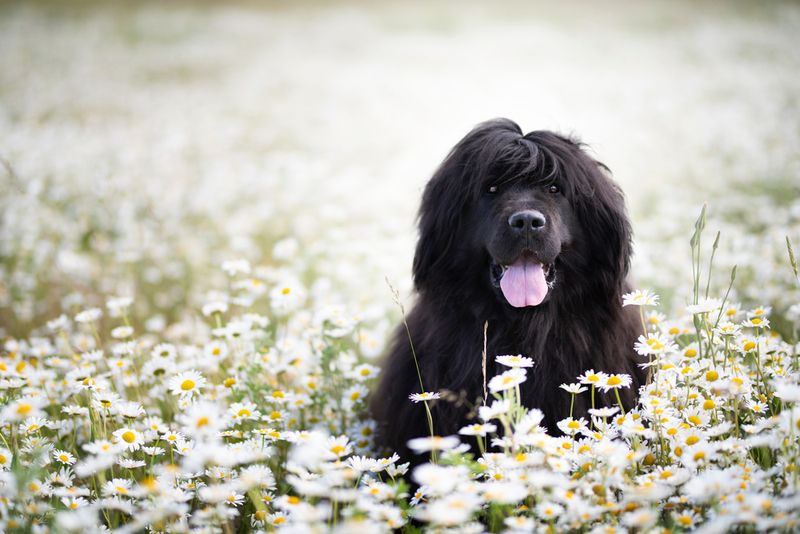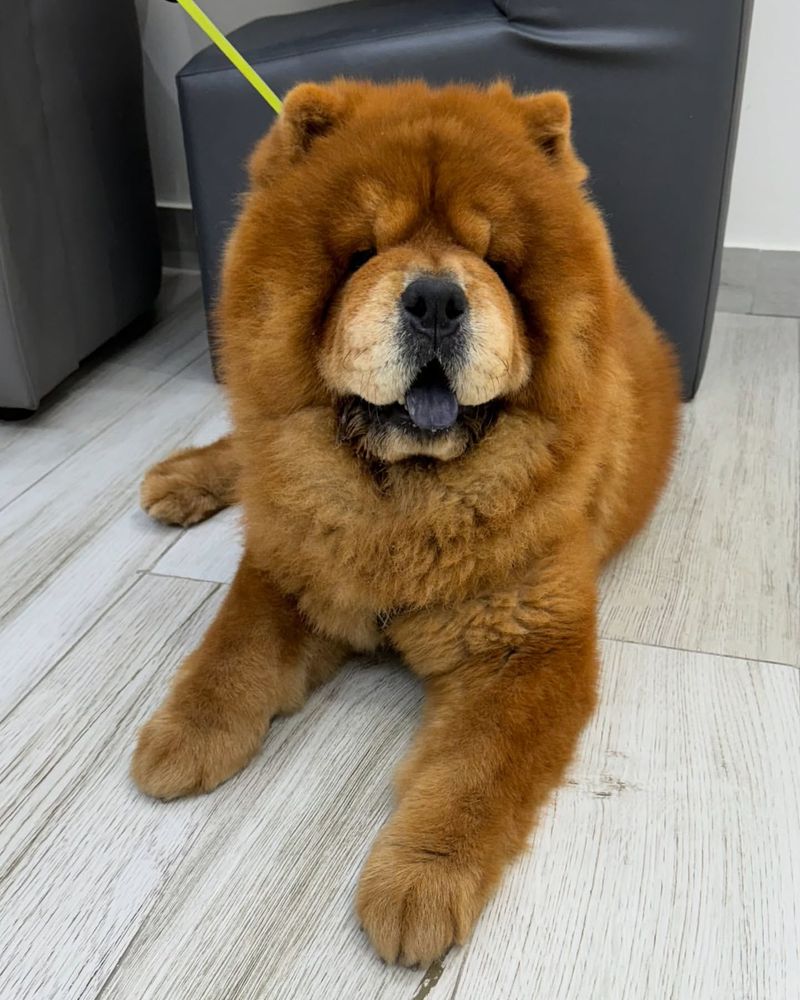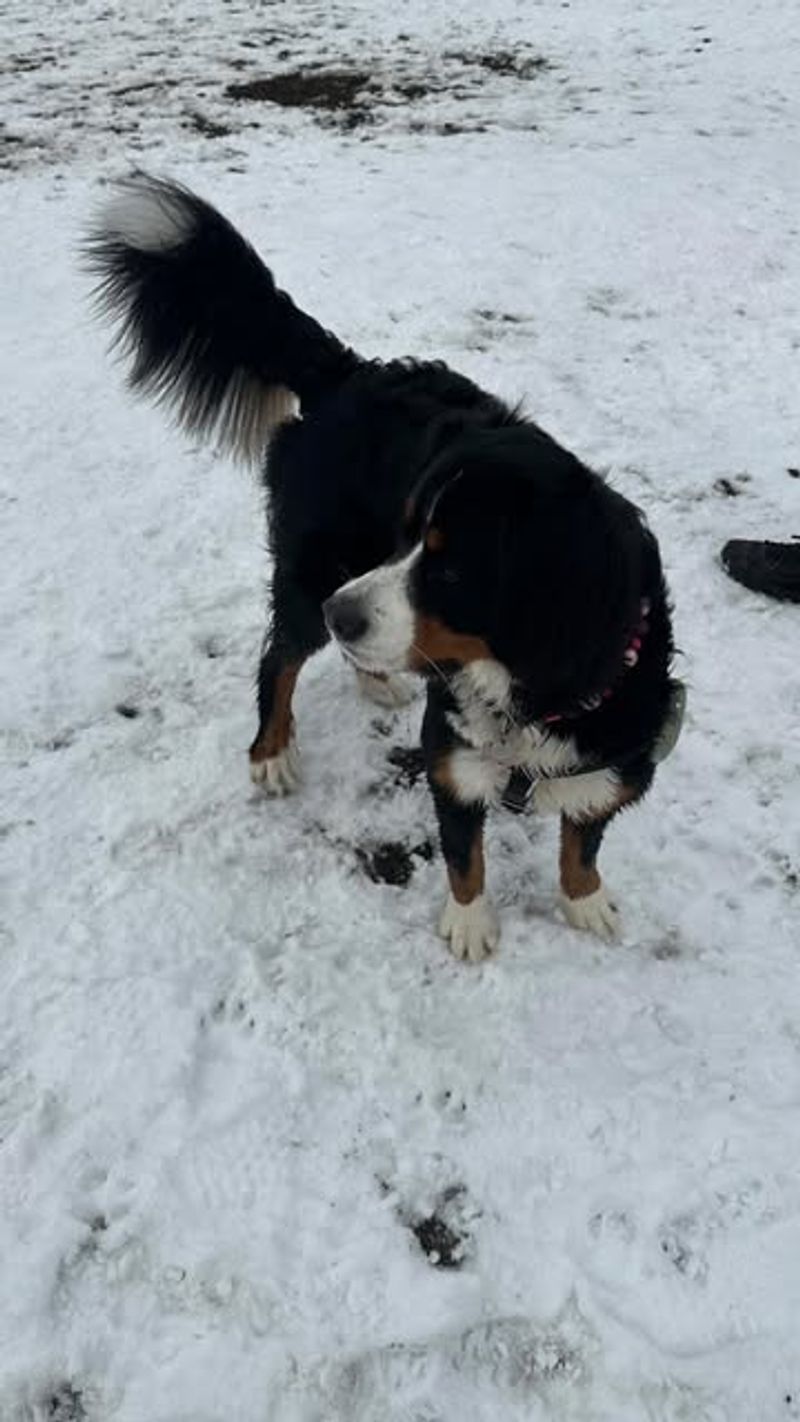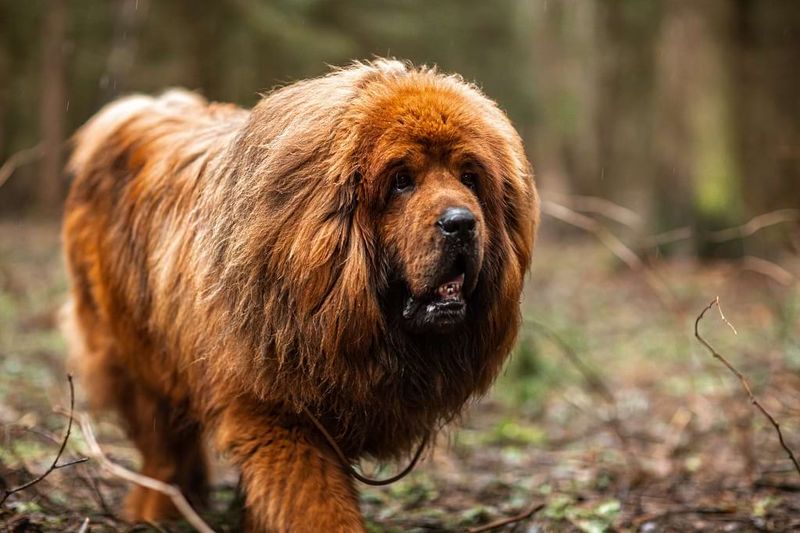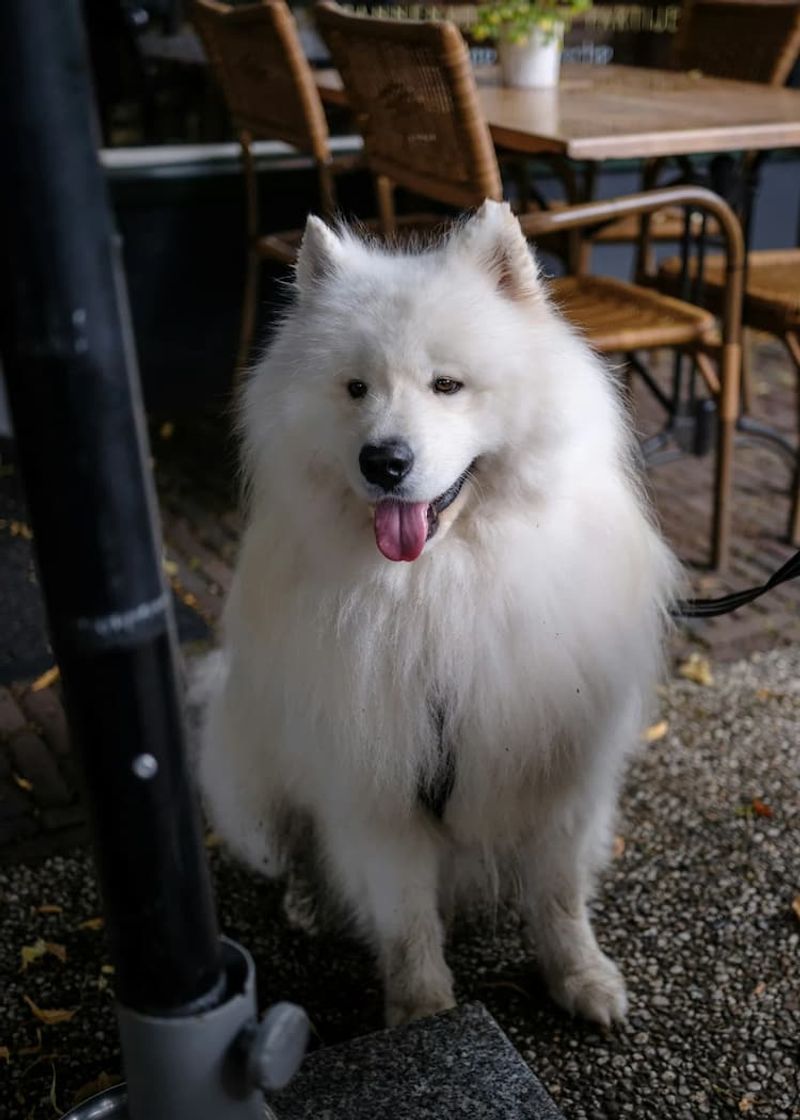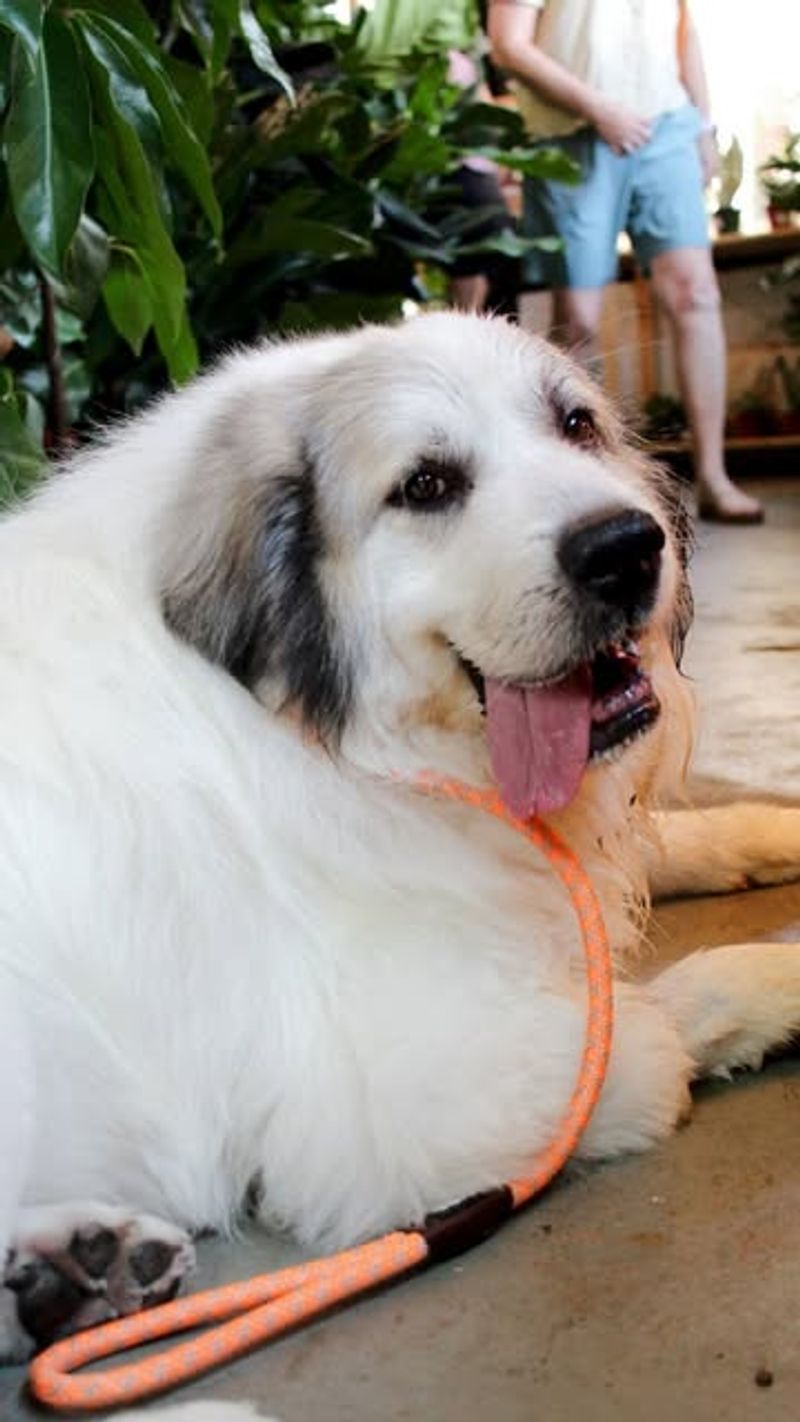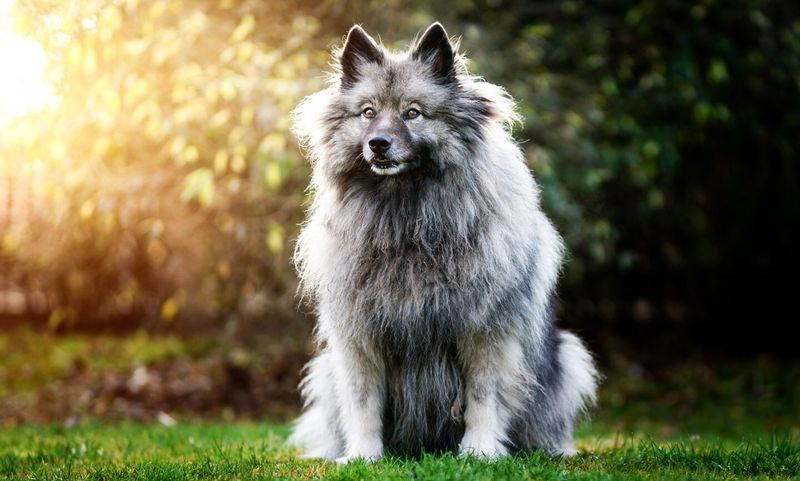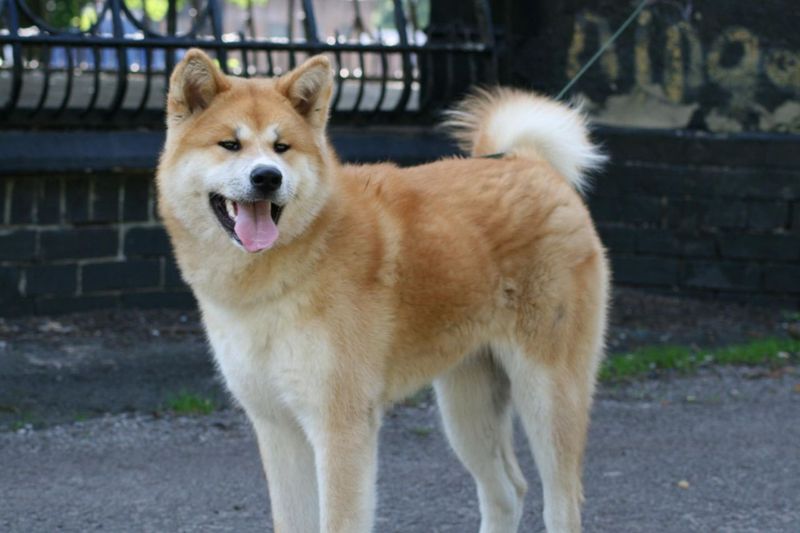When the sun blazes and temperatures soar, some dog breeds find themselves at a disadvantage. Their thick coats, unique physiology, or natural habitat preferences make them less suited for warmer climates. This article explores 11 dog breeds that struggle in the heat, highlighting their unique characteristics and why they prefer cooler surroundings.
Saint Bernard
With a heart as big as its paws, the Saint Bernard is renowned for its heroic rescue missions in the Swiss Alps. This gentle giant sports a dense double coat, initially designed to withstand harsh, cold environments.
In warmer climates, their thick fur becomes a burden, trapping heat against their skin. Imagine wearing a winter coat in the summer—it’s no wonder they prefer the cold.
Despite their size and strength, they are susceptible to overheating, making them less suitable for hot regions.
Siberian Husky
The Siberian Husky, with its striking blue eyes and wolf-like appearance, thrives in cold climates. Known for their endurance, they were bred to pull sleds across frozen terrains.
Their thick double coat provides insulation, making them vulnerable to heat exhaustion. In hot weather, their playful and energetic nature can quickly lead to overheating.
A breed built for snow, they find solace in cooler temperatures, making them less adept to handle the heat.
Alaskan Malamute
Bred for strength, the Alaskan Malamute is a powerhouse in the snow. Their thick, coarse coat keeps them warm through harsh winters.
However, this same feature becomes a disadvantage in warm weather, leading them to seek shade and cool surfaces. They are susceptible to overheating, especially during exertion.
Their preference for cold climates is evident, as they are more comfortable with snow underfoot than with sun overhead.
Newfoundland
With a coat as thick as their loyalty, Newfoundlands are true water dogs. Originally from the chilly coasts of Canada, their dense fur and webbed feet make them excellent swimmers.
In hot climates, their heavy coat can cause discomfort and overheating, particularly if they’re not near water to cool off.
This breed’s love for water is matched only by its need for cooler environments, making it less suited for hot weather.
Chow Chow
With its distinctive mane and regal stance, the Chow Chow is often compared to a lion. This breed’s dense double coat and unique blue-black tongue lend it a majestic air.
However, their thick fur makes them poorly adapted to heat, often leading them to seek out the coolest spots in the house.
Chow Chows are more comfortable in cooler climates, where their coat acts as a cozy shield rather than a heat trap.
Bernese Mountain Dog
The Bernese Mountain Dog, with its striking tri-color coat, hails from the Swiss Alps. This breed was bred to work in cold weather, herding cattle and pulling carts.
Their thick fur, while stunning, makes them ill-suited for hot climates. Overheating is a concern, particularly during physical activity.
With a love for the cold, these dogs are happiest when they can frolic in the snow, keeping cool and comfortable.
Tibetan Mastiff
Known for its impressive size and protective instincts, the Tibetan Mastiff was bred to guard livestock in the Himalayas. Their thick double coat provides excellent protection against cold weather.
In hot climates, however, this same coat can cause overheating, and they often seek out shade and rest.
These guardians of the cold are best suited for cooler environments where their coat serves them well.
Samoyed
The Samoyed, with its signature smile and fluffy white coat, is a true snow lover. Bred by Siberian nomads for herding reindeer, they thrive in cold climates.
Their thick double coat offers excellent insulation, making them vulnerable to overheating in warm weather. This naturally friendly breed often seeks out cool places to rest.
Samoyeds are happiest when surrounded by snow, where they can play without the risk of heat stress.
Great Pyrenees
With a calm and patient demeanor, the Great Pyrenees is a gentle guardian of the flock. Bred to work in the icy Pyrenees Mountains, their thick coat provides warmth in frigid conditions.
In hot weather, this same coat can lead to overheating, requiring careful management to keep them cool.
These majestic dogs are best suited to cold climates where their natural adaptations shine.
Keeshond
Known for their fox-like faces and plush coats, Keeshonds are cheerful companions. Originally bred as watchdogs in cold climates, their thick fur provides essential warmth.
Warm weather can make them uncomfortable, often seeking out shade and cool surfaces. Despite their adaptability, they thrive better in colder environments.
In the snow, their energetic and playful nature truly comes alive, making them ideal cold-weather dogs.
Akita
The Akita, with its powerful build and noble bearing, hails from the snowy mountains of Japan. Bred for hunting in cold weather, they possess a thick double coat.
Warm climates pose a challenge, often leading them to seek cooler spots to rest. Their fierce loyalty and active nature require careful management in the heat.
Akitas are most at home in cooler climates, where their physical and temperamental traits align perfectly with the cold.
